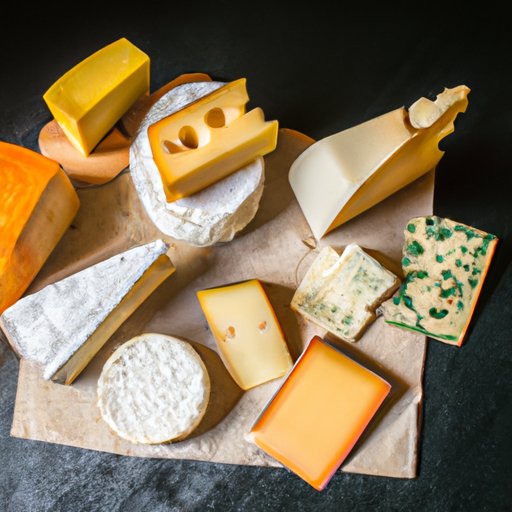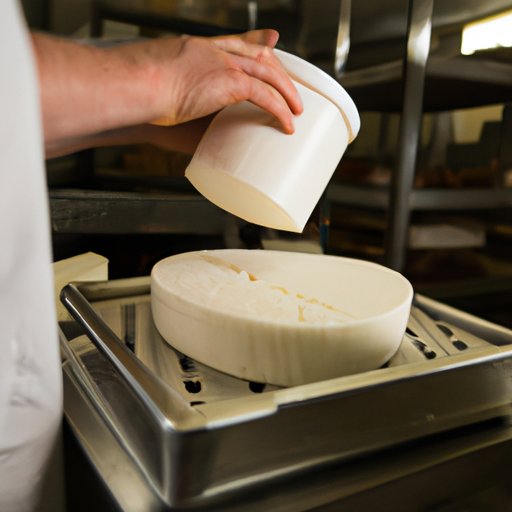Introduction
Cheese culture is a term used to describe the collective knowledge, practices, and traditions associated with the production and consumption of cheese. With its rich and varied history, cheese has become an integral part of many cultures around the world. This article will explore the origins and history of cheese culture, its different types and regional variations, and the art and science of cheesemaking. Additionally, it will examine the impact of cheese on cuisine around the world and its role in popular culture.
Exploring the Origins and History of Cheese Culture
The origins of cheese culture can be traced back thousands of years. According to archaeological evidence, cheese was first produced in the Middle East around 8000 BCE. It is believed that this early form of cheese was made from sheep or goat’s milk and stored in animal skins or stomachs. From there, cheese spread throughout the ancient world, with evidence of its production in Ancient Egypt, Greece, and Rome.
In the Middle Ages, cheese production became more widespread and organized. During this period, monks began experimenting with different recipes and techniques for making cheese. These innovations spread across Europe, leading to the development of distinct regional cheeses. By the 16th century, cheese had become an important part of European cuisine and culture.
In the modern era, cheese production has been revolutionized by advances in technology and the introduction of new ingredients. Today, cheesemakers have access to a wide variety of ingredients and tools, allowing them to create unique flavors and textures. In addition, the globalization of the food industry has led to the emergence of new international varieties of cheese.

Understanding the Different Types of Cheese and Their Regional Variations
Cheese is classified into three main categories based on texture and moisture content: hard, soft, and blue. Hard cheeses are aged for longer periods of time and have a dry, crumbly texture. Examples of hard cheeses include cheddar, parmesan, and swiss. Soft cheeses are younger and have a creamy, spreadable texture. Examples of soft cheeses include brie, camembert, and feta. Blue cheeses are aged for longer periods of time and have a pungent flavor. Examples of blue cheeses include gorgonzola, roquefort, and stilton.
In addition to these general categories, there are also many regional variations of cheese. For example, Italian cheeses such as mozzarella, ricotta, and parmigiano-reggiano are popular worldwide. French cheeses like brie and camembert are also well-known. In the United States, cheddar, colby, and monterey jack are some of the most popular varieties.

Examining the Art and Science of Cheesemaking
Cheesemaking is both an art and a science. The artistry of cheesemaking lies in the selection and combination of ingredients, as well as the aging process. Cheesemakers use different types of milk, cultures, and enzymes to create unique flavors and textures. Additionally, the length of the aging process affects the flavor profile of the cheese.
The science of cheesemaking involves understanding the chemical reactions that occur during the production process. This includes understanding how different ingredients interact with each other, as well as the effects of temperature, humidity, and aging on the final product. By understanding the science behind cheesemaking, cheesemakers can produce high-quality products consistently.
Investigating the Impact of Cheese on Cuisine Around the World
Cheese is an essential ingredient in many traditional cuisines around the world. In France, cheese is often used to make dishes like quiche, fondue, and croque monsieur. In Italy, cheese is used to make pasta dishes like lasagna and macaroni and cheese. In the United States, cheese is used to make pizza, grilled cheese sandwiches, and nachos.
In addition to traditional cuisines, cheese is also a popular ingredient in modern fusion dishes. For example, chefs are experimenting with adding cheese to tacos and burritos. Additionally, cheese is being incorporated into desserts like cheesecake and ice cream.

Analyzing the Role of Cheese in Popular Culture
Cheese has become a popular subject in popular culture. Memes featuring cheese are widespread on social media platforms, and movies and television shows often feature cheese in some capacity. Additionally, cheese has become a popular topic of conversation among foodies and culinary enthusiasts.
Cheese has also become a symbol of luxury and indulgence. Many restaurants offer expensive cheese platters, and cheese-themed events and festivals are becoming increasingly popular. Additionally, cheese is increasingly being used as a decorative element in home décor.
Conclusion
Cheese culture has a long and fascinating history. Its production and consumption have been influenced by numerous factors over the centuries, leading to the emergence of distinct varieties and regional variations. Additionally, cheesemaking is both an art and a science, requiring a deep understanding of the ingredients and processes involved. Finally, cheese has had a major impact on cuisine around the world and has become an important part of popular culture.
In conclusion, cheese culture is an important part of many cultures around the world. Its history and production are complex and varied, and its impact on cuisine and popular culture cannot be overstated. As we continue to explore and celebrate cheese culture, we can gain a deeper appreciation for this delicious and versatile food.
(Note: Is this article not meeting your expectations? Do you have knowledge or insights to share? Unlock new opportunities and expand your reach by joining our authors team. Click Registration to join us and share your expertise with our readers.)
